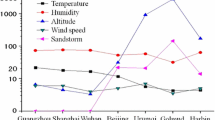Abstract
The course-keeping ability of a pure car carrier (PCC) in windy conditions is discussed in this article. Numerical simulations of two PCCs were carried out to compare their course-keeping abilities in wind. The two PCCs had the same hull form but different types of rudder. One PCC was fitted with a semispade rudder (hereinafter, the normal rudder), whereas the other was fitted with a spade-type Schilling rudder (hereinafter, the Schilling rudder). Both PCCs were designed to a new concept for the accommodation structure and hull form above the load water line. In this new design concept, there are no sharp corners in the superstructure so as to reduce wind resistance and improve steering performance. The limits of course keeping for the two PCCs were investigated through simulations. The course-keeping abilities of the two PCCs, each with two different types of autopilot system, were also investigated in wind. To develop the numerical simulation, the hydrodynamic coefficients of the two PCCs were predicted based on the data published for a third PCC having similar principal particulars. The numerical model of the two PCCs was validated by comparing its behavior with the respective full-scale trial results. Wind resistance coefficients were predicted by combining the results of wind tunnel experiments of the object PCCs and a regression model. Numerical simulations under steady wind conditions were also carried out and the results compared with some full-scale experiments to validate the mathematical model of the PCC.
Similar content being viewed by others
References
K Kose M Hosokawa H Yamada et al. (1992) ArticleTitleA study on performance estimation of special rudders (in Japanese) Trans West Jpn Soc Nav Archit 84 49–57
K Matsumoto Y Tanaka K Hirota et al. (2003) ArticleTitleReduction of wind force acting on ships (in Japanese) J Kansai Soc Nav Archit 240 115–121
M Ueno (2000) ArticleTitleA GPS-based system for precise shipping guidance and control J Mar Sci Technol 5 9–15 Occurrence Handle10.1007/s007730070016
Y Yoshimura (1986) ArticleTitleMathematical model for the maneuvering ship motion in shallow water (in Japanese) J Kansai Soc Nav Archit 200 41–51
DNV (1985) Hull equipment and appendages: stern frames, rudders and steering gears. Rules for classification of steel ships part3. Det norskeVeritas, Norway, Chap 3, Sect 2:2–19
T Fujiwara M Ueno T Nimura (1998) ArticleTitleEstimation of wind forces and moments acting on ships (in Japanese) J Soc Nav Archit Jpn 183 77–90
KP Rhee KH Kim (1999) ArticleTitleA new sea trial method for estimating hydrodynamic derivates J Ship Ocean Technol 3 IssueID3 25–44
GK Saha K Suzuki H Kai (2004) ArticleTitleHydrodynamic optimization of ship hull forms in shallow water J Mar Sci Technol 9 51–62 Occurrence Handle10.1007/s00773-003-0173-3
EW McGookin DJ Murray-Smith Y Li et al. (2000) ArticleTitleShip steering control system optimisation using genetic algorithms Control Eng Pract 8 429–443 Occurrence Handle10.1016/S0967-0661(99)00159-8
H Yasukawa K Kose (2004) ArticleTitleApplication of a simulation method for ship maneuverability to the maneuvering booklet (in Japanese) Trans West Jpn Soc Nav Archit 107 87–89
Author information
Authors and Affiliations
Corresponding author
About this article
Cite this article
Hasegawa, K., Kang, D., Sano, M. et al. A study on improving the course-keeping ability of a pure car carrier in windy conditions. J Mar Sci Technol 11, 76–87 (2006). https://doi.org/10.1007/s00773-006-0214-9
Received:
Accepted:
Issue Date:
DOI: https://doi.org/10.1007/s00773-006-0214-9




